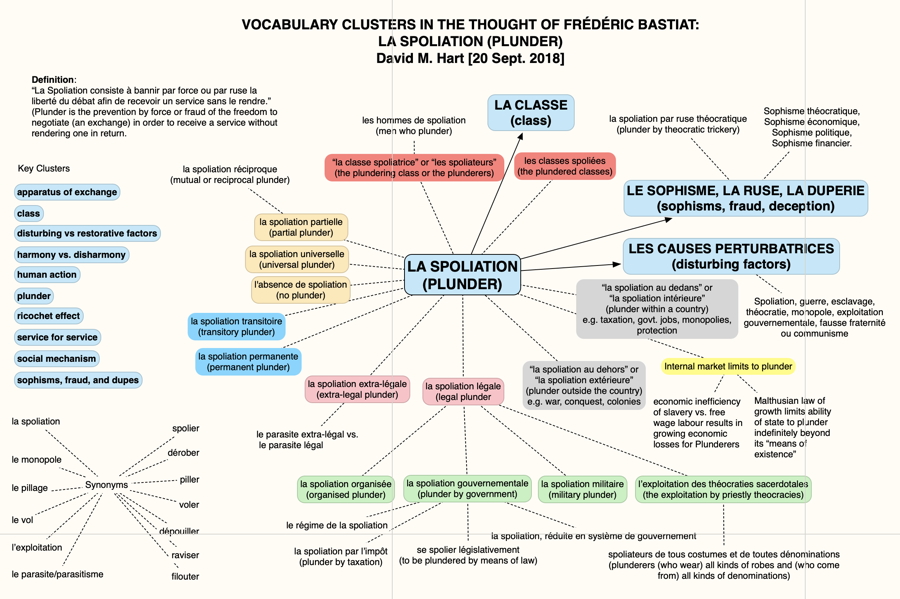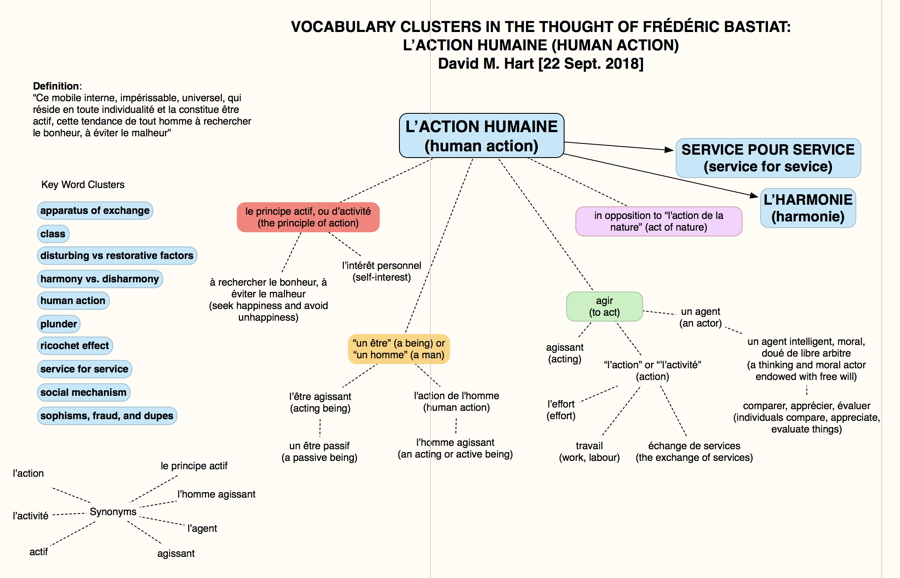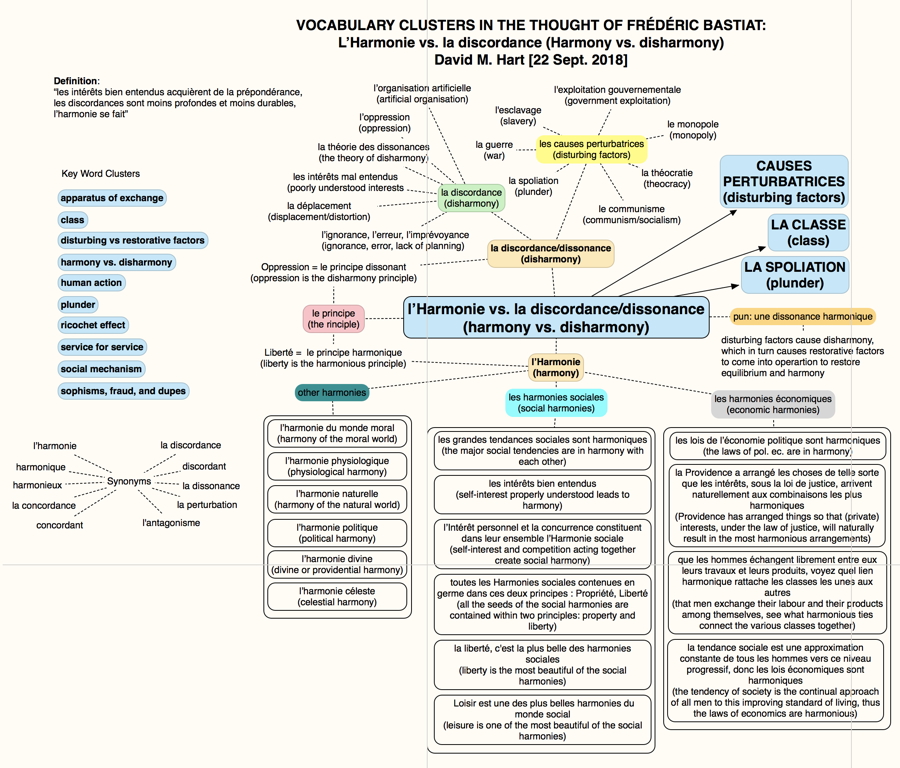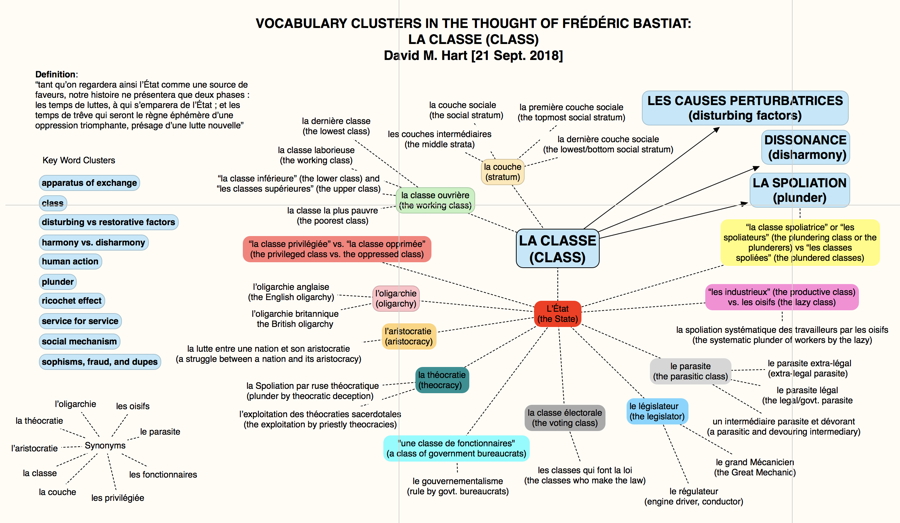Here are the “concept maps” or what I call “vocabulary clusters” of some of Bastiat’s key ideas which I have drawn up to assist me in my editing and translating work. I have done ones for Class, Disturbing Factors, Harmony and Disharmony, Human Action, and Plunder (images below).
What the digitization of the collected works of Bastiat and the compilation of those texts into one searchable file allowed me to do were the following things:
- to check the consistency of our and previous translations (Stirling, FEE) – I found that key terms (like “le ricochet” or “human action”) were not translated consistently
- to note when a key term was first used and to track his use of it over time
- to note the other terms which he associated with it, what I call “clusters”, which often involved related terms or opposite terms
My conclusion is that Bastiat developed a rich and diverse vocabulary of terms which was unique to him, which appeared in an advanced state for the first time in early 1845 in two articles he wrote before he entered the orbit of the Parisian economists, and which evolved slightly over the course of the final six years of his life.
I have identified a number of such “vocabulary clusters” of key words for some of his main ideas which are listed below. I used the “mind mapping” software “Scrapple” to show the relationships between the words in a visual way. I have completed five so far (class, disturbing factors, harmony and disharmony, human action, and plunder) and have plans to do a dozen more on the ricochet effect, the domains of the community (or the commons) and of private property, the social mechanism vs. mechanics, the apparatus of exchange, service for service, the seen and the unseen, responsibility and solidarity, perfectibility and progress, sophisms and the dupes, the telling of stories to explain economic concepts.
See “APPENDIX 1: CONCEPT MAPS OF THE TERMS USED BY BASTIAT” at my website





